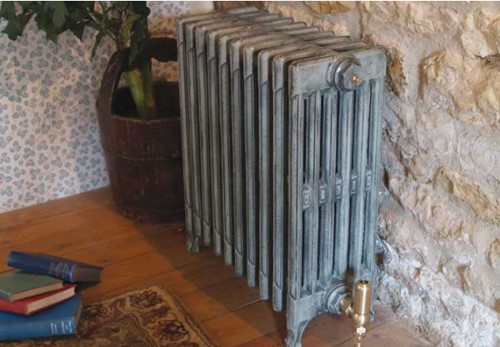Posted: Wednesday, October 28, 2020

Ensuring your radiators are working properly ahead of winter is crucial and this means clearing your radiators of sludge or trapped air.
If you switch your heating on and your radiators have cold spots, it could be that sludge has built up in your radiators. This will certainly be the case if you’ve balanced and bled your radiators but they’re still cold. You want your heating to work properly, so, how do you flush a radiator?
Trads is here to explain what this is, why you may need to do and how it’s done…
Sludge can build up in your radiator because particles of dirt have mixed with rust and scale that circulates through the system.
It can happen if your radiators are particularly old. Considering radiators can last for decades, it can be a common problem unless your radiators are well cared for. The sludge collects at the bottom of your radiator and gets larger.
The sludge stops hot water flowing through your heating system properly. This creates cold areas on your radiator and puts a strain on your boiler. Other areas of the radiator are unaffected by the sludge and warm up as normal but it’s the biggest cause of boiler breakdowns.
If you have blocked radiators and don’t remove the sludge, the build-up will make your heat pump and radiators work harder by preventing the hot water from circulating properly. Here are the benefits of flushing your radiators:
Knowing how to flush sludge in radiators out offers huge benefits for very little effort. If you can lift a radiator (or have someone to help) and turn a wrench, then basic maintenance like this is definitely something you can do.
If you haven’t bled your radiators, this should always be your first action once you’ve tested your heating. You may find that this removes cold spots in a radiator. If you are constantly bleeding your radiators, this could be a warning sign that you need to flush them.
We’ve briefly mentioned one of them above, but there are warning signs of having sludge in your radiators. These are:
Flushing, if the sludge problem is not bad - light brown fluid from bleeding a radiator - you force water through the radiator with a hose pipe. This is different from power flushing, which is used when there is a large amount of sludge.
If you need a power flush, an engineer will connect a machine to your heating system. This will push a powerful, low-pressure flow of liquid through your system to dislodge sludge and rust. This will remove it from your radiators and boiler, clearing the system. They will often add an inhibitor solution to stop sludge building up again.
It can take hours to flush your radiator system. It can take even longer if you have a larger heating system or there’s a lot of sludge.
Yes, you can flush a radiator yourself, particularly if there isn’t a large amount of sludge in your radiator. If you can remove and lift a radiator, or get someone to help you lift it, then you can flush a radiator yourself with basic equipment.
Now you’ve decided to flush your radiator, you can follow this easy, step-by-step guide on how to do it. First, you’ll need the following equipment:
Step 1: Turn your heating off and let the radiators cool down.
Step 2: Put your sheets down everywhere to catch any sludge, especially space around and under valves.
Step 3: Turn off the valves - the thermostatic radiator valve and lockshield valve - from the rest of the central heating system. Turn the TRV to ‘0’ and remove the plastic cap on the lockshield valve; then use a spanner to turn the valve clockwise all the way.
Note: You must count the number of turns it takes to close the lockshield valve so you can turn it the other way the same number of times to reopen it later.
Step 4: Loosen the thermostatic valve using two spanners. Place one on the body of the valve and use the other to loosen the nut that joins the valve to the radiator.
Step 5: Open the bleed valve with a radiator bleed key and drain the radiator. Place a bucket under the bleed valve to catch everything that comes out.
Step 6: Loosen the lockshield valve the same way as the TRV valve and tilt the radiator. Then, close the bleed valve with the key.
Step 7: Remove the radiator from the wall. Cover the inlets with a towel or plastic bag while you move it. It’s always best to flush a radiator outside.
Step 8: Get your hose pipe and attach it to the radiator valve inlet. Turn the tap on full blast and hose the radiator down. If you have a rubber hammer, you could use it to give the radiator a tap to try and dislodge the build-up of sludge.
Step 9: Once you’re done, reconnect the radiator. Re-tighten the nuts and open both valves, and remember to turn the lockshield valve the same number of times as you did when you removed the radiator.
Step 10: Open the bleed valve with your radiator bleed key to allow any trapped air to escape.
There are some steps you can take to prevent sludge from building up in your central heating system, which include:
Is it time you updated your radiators? Here at Trads, we have an excellent range of beautiful cast iron and steel radiators to update your home with!
Feel free to contact us if you need any help choosing a radiator
< Back To Blog